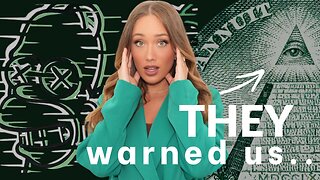Premium Only Content

Watch the Ring of Fire Solar Eclipse NASA Broadcast Trailer
A "Ring of Fire" solar eclipse, also known as an annular eclipse, occurs when the Moon covers most of the Sun's center, leaving a fiery ring-like appearance around the edges of the Moon. Here's a general description of what such a NASA broadcast trailer might include:
Introduction: The trailer typically starts with a brief introduction, mentioning the date and location of the upcoming "Ring of Fire" solar eclipse. It may also highlight the significance of the event and why it's important for scientific observation.
Spectacular Footage: The trailer may feature stunning visuals of the eclipse itself. Expect to see captivating images or animations illustrating how the Moon passes in front of the Sun, creating the characteristic "ring of fire" effect.
Scientific Explanation: There will likely be a segment explaining the science behind a solar eclipse, including how and why it occurs. This could include insights into the mechanics of the Earth-Moon-Sun system.
Safety Information: Safety is paramount when observing a solar eclipse. The trailer might include a section on safe viewing practices, such as using eclipse glasses or other approved viewing methods.
Expert Commentary: Expect to hear from NASA scientists or astronomers who will provide expert commentary on the eclipse. They may discuss the significance of the event for scientific research and space exploration.
Broadcast Details: The trailer will likely provide information on where and how you can watch the NASA broadcast of the eclipse. This could include details about the NASA website, YouTube channel, or other platforms where the live stream will be available.
Encouragement to Tune In: The trailer will conclude with an invitation for viewers to tune in and experience the "Ring of Fire" solar eclipse broadcast, encouraging people to witness this remarkable celestial event.
Remember that for safe viewing of a solar eclipse, it's essential to use proper eye protection or watch through approved methods to prevent damage to your eyes. NASA and other reputable space agencies typically emphasize safety in their eclipse broadcasts and educational materials.
-
 LIVE
LIVE
Lofi Girl
2 years agoSynthwave Radio 🌌 - beats to chill/game to
241 watching -
 2:02:49
2:02:49
Inverted World Live
7 hours agoAnnunciation Catholic School Shooting and Spiritual Warfare w/ AK Kamara | Ep. 99
172K23 -
 10:10
10:10
Robbi On The Record
3 days agoHollywood’s Hidden Messages: Predictive Programming & What’s Next
21.6K29 -
 4:43:34
4:43:34
Drew Hernandez
12 hours agoLGBTQ TERRORIST EXECUTES CATHOLIC KIDS IN MINNEAPOLIS
16.2K18 -
 2:17:08
2:17:08
FreshandFit
8 hours ago10 Top Red Pills About American Women
51.2K18 -
 2:10:26
2:10:26
Badlands Media
13 hours agoDevolution Power Hour Ep. 384: Durham’s Blind Spots, Soros Panic, and Trump’s Economic Warfare
65.2K33 -
 3:17:28
3:17:28
TimcastIRL
7 hours agoTrans Shooter Targets Catholic Kids In Mass Shooting, Leftists Reject Prayers | Timcast IRL
228K68 -
 1:31:29
1:31:29
Brandon Gentile
1 day ago25 Year Wall Street INSIDER: $1M Bitcoin Soon Is Just The START
23.4K -
 6:59:13
6:59:13
SpartakusLIVE
9 hours ago#1 Birthday Boy Celebrates with MASSIVE and HUGE 4.8-Hour Stream
58.6K -
 55:54
55:54
Man in America
10 hours agoFrom Oil Barons to Pill Pushers: The Rockefeller War on Health w/ Jeff Adam
54.3K9